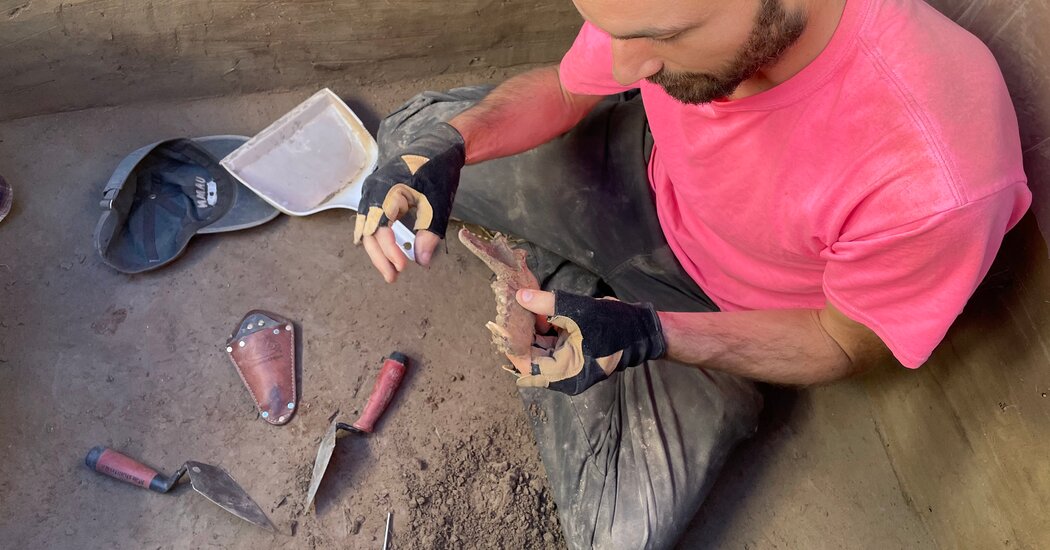Animal remains unearthed in Alaska give clues to how wolves were domesticated.
As the Late Pleistocene ice age drew to a close, people and wolves began to bond. From there, it was just a few millenniums to puppy yoga and dog influencers. But the details of exactly how and when wolves were tamed and domesticated remain up for intense debate.
“There’s been millions of dollars spent to try to figure this out,” said Robert Losey, an anthropologist at the University of Alberta who studies the domestication of dogs. Despite those efforts, he said, “we still have a really poor understanding of where and how dogs originated.”
A new study has added a crucial clue in the form of a 12,000-year-old leg bone from the Swan Point archaeological site in Alaska. The DNA in those remains revealed that the animal’s mother had been a wolf, but a chemical analysis showed the creature had a fish-heavy diet likely to have been provided by people, the researchers said.
This discovery appears to capture a key moment in the budding relationship between wolves and people, offering compelling evidence of the two species drawing closer together. It’s unclear, however, whether the newly discovered animal was intentionally fed by people, or had simply learned to scavenge their trash. That has left researchers divided on just where to place the Swan Point specimen on the wolf-dog continuum.
“It may not be what we think of as domestication in the Western sense,” said Joshua Reuther, an archaeologist at the University of Alaska Fairbanks and an author of the new study, published this month in Science Advances. “But there is a very strong human-canid interaction there.”
The findings offer some of the earliest evidence of dog domestication in the Americas, older than the 10,000-year-old remains, also from Alaska, that were the subject of a 2021 study.
